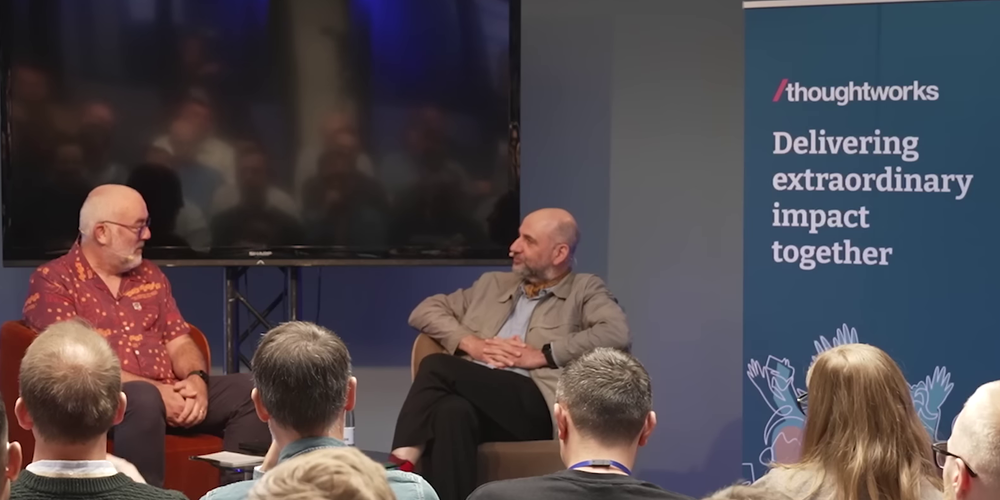tagged by: computer history
Born for it

The stereotype of the socially-awkward, white, male programmer has been around for a long time. Although “diversity in tech” is a much discussed topic, the numbers have not been getting any better. On the contrary, a lot of people inside and outside of the IT industry still take it for granted that this stereotype is the natural norm, and this perception is one of the things that is standing in our way to make the profession more inclusive and inviting. So where does this image come from? Did the demographics of the world's programmer population really evolve naturally, because “boys just like computers more”? What shaped our perception of programmers? This text is about some possible explanations I found when reading about the history of computing.
Writing The Agile Manifesto
In February 2001 a group of seventeen software pundits got together in Snowbird UT to discuss the growing field of what used to be called lightweight methods. We decide to use the term agile to describe this new breed of agile methods. We also wrote the Manifesto for Agile Software Development , setting out the values and principles of these agile processes. I was one of these self-elected visionaries and have since come across many questions about this group's origins and the subsequent founding of the agile alliance. This is my recollection of those events.
Early Days of Agile Development & Is Design Dead?

At goto copenhagen last year, my friend James Lewis interviewed me. I talk about when I learned about iterative design from Kent Beck, the dangers of product owners interfering with business-developer communication, and writing the agile manifesto. During this he specifically asked about my essay Is Design Dead. There's also a some audience questions asking if pair programming is a bad thing for introverts like us (no), and (inevitably) the role of LLMs for programmers today.
The XP 2000 Conference
In late June over a hundred people gathered on the Mediterranean island of Sardinia to take part in the XP2000 conference to discuss Extreme Programming (XP) and other flexible methodologies.
Recollections of Writing the Agile Manifesto
The Agile Uprising podcast has been doing a series of interviews with the authors of the Agile Manifesto. This is my turn in the interview seat. I don't remember much about the Snowbird workshop itself, but I was able to describe a bit about the context leading up to the manifesto.
Agile Manifesto Meeting
The meeting at Snowbird Utah in 2001 that decided to use the word 'Agile' and began the 'Manifesto for Agile Software Development'.
Agile Signatory

From time to time I get introduced as a “signatory of the Agile Manifesto”. Usually what they mean is that I'm an author of the Manifesto for Agile Software Development, and thus one of its initial signatories. But actually there are many more signatories than the 17 authors, when I last looked the count was up to 10,104. If you're so inclined you may join that list.
C3
C3 was the short name of the Chrysler Comprehensive Compensation project, a payroll project at Chrysler which has since become famous as the 'birth project' of Extreme Programming.
History Of Iterative Development
Most of the clients I run into have not heard of iterative development, or consider it to be a new and relatively untried phenomenon. In contrast iterative development has been around for a long time under various names. A recent article by Craig Larman and Vic Basili in IEEE Software summarizes an effort to capture this history and gives you a good idea on the long story of successful projects that use iterative development approaches.
Objects And Iteration
From the very beginnings of object-oriented development, OO design has been linked with iterative and incremental development. But as many point out, there's no inherent link between the two. You can do OO in a waterfall, and you can do IID without objects. So why are the two so closely linked?
Software And Engineering
Throughout my career, people have compared software development to “traditional” engineering, usually in a way to scold software developers for not doing a proper job. As someone who got his degree in Electronic Engineering, this resonated with me early in my career. But this way of thinking is flawed because most people have the wrong impression of how engineering works in practice.
